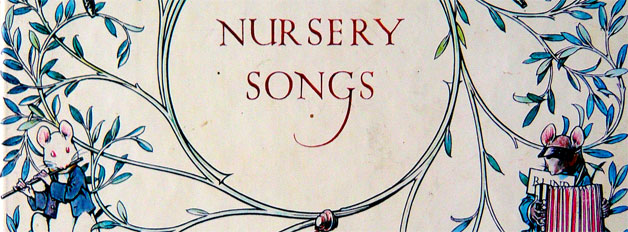Simple Songs: An alternative approach to warming up, training your ear, and learning your keys

This guest post is from saxophone and multi-reed player, composer, recording artist, and educator Sam Sadigursky of SamSadigursky.com
One of the most important concepts that I try to have all my students understand is that any melody they hear, regardless of complexity, is not a set of notes, but instead a set of musical (or intervallic) relationships. No matter which note you start on, if you preserve the relationships found in a song, it’s still going to be the same song, even if the notes you play are completely different.
Taking simple songs and playing them in all twelve keys is a great way of learning to identify and hear these relationships. It’s an incredibly effective way of training your ear to hear intervals while gaining fluidity in different keys. It can also be a refreshing break from practicing scales. If the song is a slow one (and if you’re new to this, you should be doing any song slowly), then it can also be your warm-up for the day as well.
A lot of students learning jazz are told to take specific licks or riffs that they like and then take them through the keys, but many of these riffs are quite complicated. It can be much more beneficial to take simple, mostly diatonic folk-type songs and get good good at transposing them before moving on to more difficult vocabulary. Often, once you start transposing these songs, you’ll find some of the intervals in them more difficult and varied than you might have once thought.
Below you’ll find a list of songs that you might want to start with. You can do this with any song you ever come across. Another bonus is that once you’ve taken a song through the keys, you’ll find you know it much better then when you started, since you’ll have a grasp on how it was actually constructed.
Unless you see otherwise, all songs start on the tonic (or root note) of whichever key you are playing it in.
- The Can Can (this song is mostly a scale, so it’s a great alternative to practicing your Major scale and basic patterns)
- Happy Birthday (be careful – the opening note of this is the 5th degree of whatever key you’re in)
- Old McDonald
- Home on the Range (starts on the 5th degree)
- Auld Lang Syne (starts on the 5th degree)
- Somewhere over the Rainbow
- America the Beautiful (starts on the 5th degree)
- The Flinstones Theme (starts on the 5th degree)
- The Star Spangled Banner (starts on the 5th degree)
- Love theme from Cinema Paradiso (one of the most haunting melodies ever written in case you don’t know it)
- Oleo (Sonny Rollins)
- Brahms Lullaby (starts on the 3rd degree)
- Rythm-a-ning (Thelonious Monk)
- When the Saints Go Marching In
- The Star Wars Theme
- Nobody Knows the Trouble I’ve Seen (starts on the 3rd degree)
- The First Noel (starts on the 3rd degree)
- O Little Town of Bethlehem (starts on the 3rd degree)






December 28, 2010 @ 10:33 pm
Hey Doron,
That’s a good point. You hear from a young age that you should transcribe. It does a lot for your skills on sax.
Starting with bop solos doesn’t seem to be the right process though.
Melodies ‘make more sense’ and have more patterns generally.
-Neal
Improving Your Sax Playing the Fast Way | Best. Saxophone. Website. Ever.
September 8, 2011 @ 8:05 am
[…] to take Best. Saxophone. Website. Ever, contributor Sam Sadigursky’s method of practicing simple songs by ear in all twelve keys. You’ll probably laugh at this, but playing that sax solo from the […]
February 24, 2012 @ 9:18 am
Absolutely right.
But I think for beginners, use “starting notes” rather than keys.
Let the teacher decide what is an easy key for a particular tune, and get the student to start the tune on the appropriate note. But then tell the student to play the tune starting on a different note. I think that is often less confusing, as many tunes don’t start on the tonic.
I tell the student to pick ANY tune they think they know well, so that they will realise when they play the occasional wrong note. That way they can correct themselves.
March 1, 2012 @ 4:35 am
Jamie Aebersold talks of this frequently in his books and videos, and with some regret for not having figured it out at the start of his learning. He also advocates building a list of common tunes tagged by the opening interval as an exercise in ear-training. Ran Blake likes to emphasize “the primacy of the ear” to the extent of not allowing printed music in class until these basics are established, pointing out that, as he puts it, “music is an AURAL tradition. Who would have thought?” ;)
October 10, 2012 @ 10:59 am
Amazing Grace will get you through all 12 keys without having to stop. The last note of the song is the 4th, which sounds good when you start it again on that note and go all the way around the circle of 4ths/5ths.
May 23, 2013 @ 12:24 pm
hmmm… the Amazing Grace I know ends on the tonic
December 24, 2013 @ 12:36 pm
Here Comes the Bride
Twinkle,Twinkle, Little Star
Frere Jacques
Three Blind Mice
Joy to the World
O Come All Ye Faithful
July 2, 2015 @ 8:29 am
I love to do this with songs of my childhood or melodies that I particularly love. Don’t go for a list somebody else gives you. Make it personal (and by consequence ‘fun’) and think of tunes that are dear to you.
November 21, 2015 @ 4:33 am
Hi, having read what everyone has written, I find it very interesting and extremely helpful. Ive just come back to playing the sax after a short break (before the break I wasnt very good at playing, being self taught and totally stuck on how to progress). Quite a lot of ideas to try out so thankyou for all the ideas. I have never tried improvising on any instrument, I also havent learnt all of the scales (which I am now going to do). Hopefully things will start to click into place. Thanks again